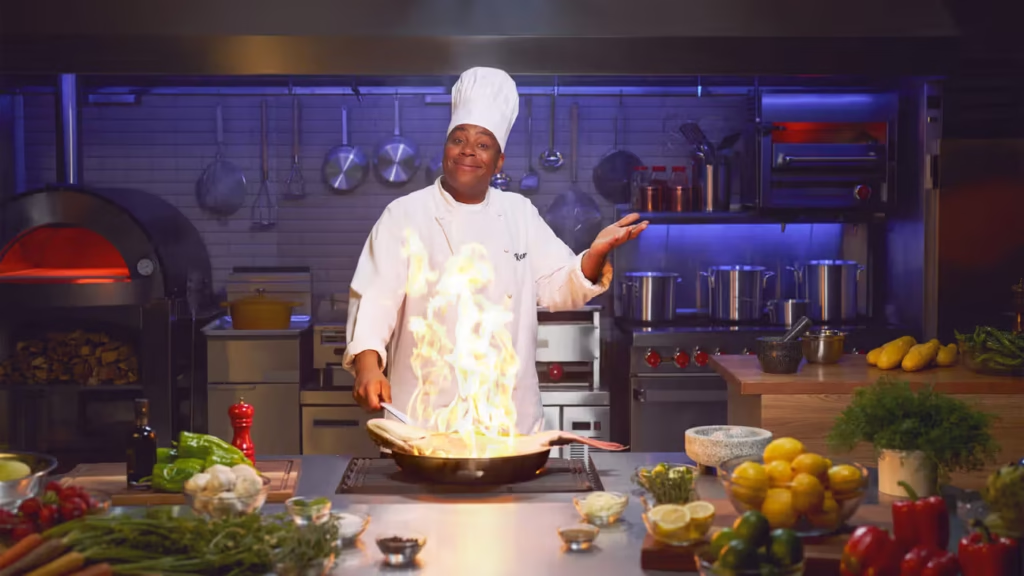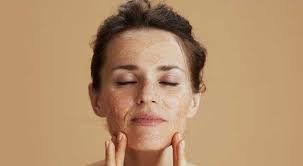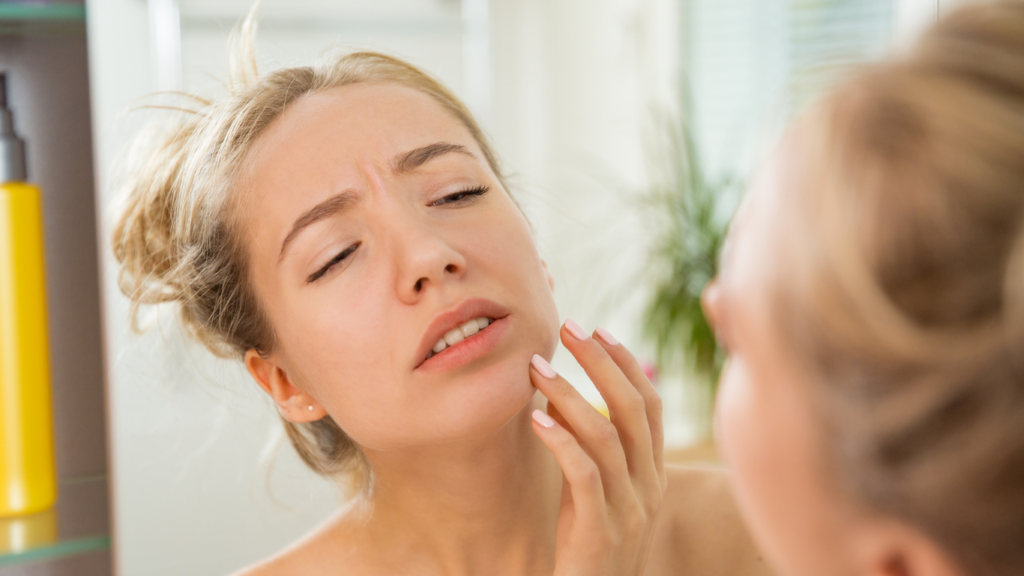Health & Wellness
Embrace Wellness with These 5 Superfoods for Health
Published
1 year agoon

In the quest for optimal health, the spotlight has shifted to a category of foods deemed as nutritional powerhouses – superfoods. These extraordinary edibles are celebrated for their exceptional nutrient density and health-boosting properties. Join us on an enlightening journey as we unravel the nutritional wonders of five superfoods for health: kale, berries, eggs, peanuts, and salmon.
Superfoods for health is not just a catchy phrase but a guiding principle for those seeking a holistic approach to well-being. These foods go beyond conventional nutrition, offering a diverse array of vitamins, minerals, antioxidants, and bioactive compounds that synergistically contribute to overall health. As we delve into the intricate details of each superfood, we aim to demystify the buzz surrounding this term, providing you with a deeper understanding of how these nutritional treasures can elevate your health to new heights. Embrace the transformative power of superfoods and unlock the secrets to a healthier, more vibrant life.
Kale: The Green Powerhouse
Nutritional Qualities: Kale, a cruciferous vegetable, boasts an impressive nutritional profile. Packed with vitamins A, C, and K, it supports vision, boosts the immune system, and promotes blood clotting and bone health. Additionally, kale contains minerals like calcium and potassium, vital for maintaining strong bones and a healthy heart. Its high fiber content aids digestion and contributes to weight management. Kale is also rich in antioxidants such as quercetin and kaempferol, providing anti-inflammatory and protective effects against chronic diseases.
Health Benefits:
- Heart Health: The fiber, potassium, and antioxidants in kale contribute to cardiovascular health by lowering cholesterol levels and reducing the risk of heart disease.
- Immune Support: The abundance of vitamin C strengthens the immune system, helping the body fend off infections and illnesses.
- Bone Health: Vitamin K and calcium work together to support bone health, reducing the risk of osteoporosis.
Berries: Nature’s Antioxidant Boosters
Nutritional Qualities: Berries, including blueberries, strawberries, and raspberries, are rich in antioxidants, particularly anthocyanins and quercetin. These compounds combat oxidative stress and inflammation. Berries also provide a significant dose of vitamins C and K, crucial for immune function and blood clotting, respectively.
Health Benefits:
- Cognitive Enhancement: Anthocyanins in berries have been linked to improved cognitive function and reduced age-related cognitive decline.
- Skin Health: Vitamin C promotes collagen production, enhancing skin elasticity and reducing the signs of aging.
- Weight Management: The high fiber content aids in satiety, supporting weight management by reducing overall calorie intake.
Eggs: A Complete Protein Source
Nutritional Qualities: Eggs are a nutritional powerhouse, rich in high-quality protein, essential amino acids, and a range of vitamins and minerals. They contain choline, crucial for brain health, and antioxidants like lutein and zeaxanthin, beneficial for eye health.
Health Benefits:
- Muscle Growth: The complete protein profile supports muscle growth and repair, making eggs an excellent choice for athletes and those looking to build lean muscle.
- Brain Health: Choline is essential for neurotransmitter production, supporting cognitive function and reducing the risk of neural tube defects during pregnancy.
- Eye Protection: Lutein and zeaxanthin contribute to eye health by reducing the risk of age-related macular degeneration.
Also Read: Empower Your Immune System: Speedy Flu Recovery Tips Decoded
Peanuts: Nutrient-Dense Energy
Nutritional Qualities: Peanuts, classified as legumes, are nutrient-dense, providing protein, healthy fats, and an array of vitamins and minerals. Rich in monounsaturated fats and antioxidants like resveratrol, they contribute to heart health.
Health Benefits:
- Heart Health: Monounsaturated fats reduce bad cholesterol levels, promoting cardiovascular health.
- Sustained Energy: The combination of protein and healthy fats provides sustained energy, making peanuts an excellent snack option.
- Weight Management: The satiating properties of peanuts help control appetite, supporting weight management goals.
Salmon: Omega-3 Fatty Acid Marvel
Nutritional Qualities: Salmon, a fatty fish, is renowned for its high omega-3 fatty acid content, specifically EPA and DHA. These essential fatty acids are crucial for brain health, cardiovascular function, and reducing inflammation. Salmon is also rich in high-quality protein, vitamins D and B12, and the mineral selenium.
Health Benefits:
- Heart Health: Omega-3 fatty acids reduce inflammation, improve cholesterol levels, and lower the risk of heart disease.
- Brain Function: DHA, a type of omega-3, supports brain function and reduces the risk of cognitive decline.
- Skin Health: Omega-3 fatty acids contribute to healthy and radiant skin, reducing inflammation and supporting collagen production.
Conclusion
In the journey toward holistic well-being, the incorporation of superfoods into our diets emerges as a fundamental and impactful choice. The nutritional symphony played by kale, berries, eggs, peanuts, and salmon is nothing short of extraordinary, offering a diverse array of vitamins, minerals, antioxidants, and essential fatty acids. By embracing these superfoods, one can embark on a transformative path towards vitality and longevity.
These nutritional powerhouses not only fortify our bodies against diseases but also contribute to the enhancement of specific bodily functions, from supporting heart health and cognitive function to promoting radiant skin and efficient weight management. As we weave these superfoods into our daily meals, we unlock a treasure trove of health benefits that radiate through every aspect of our lives. So, let these superfoods become not just ingredients but allies in your quest for a healthier, happier you – a journey where every bite is a step toward wellness and every meal is a celebration of vitality. Embrace the nourishing embrace of superfoods and thrive.
Sahil Sachdeva is an International award-winning serial entrepreneur and founder of Level Up PR. With an unmatched reputation in the PR industry, Sahil builds elite personal brands by securing placements in top-tier press, podcasts, and TV to increase brand exposure, revenue growth, and talent retention. His charismatic and results-driven approach has made him a go-to expert for businesses looking to take their branding to the next level.

You may like
Health & Wellness
The Silent Crisis: How Drug-Resistant Infections Are Stealing Millions of Young Lives
Published
5 hours agoon
April 14, 2025
A new global study has uncovered a harrowing truth: more than three million children died in 2022 due to infections that could no longer be treated with antibiotics. The majority of these deaths occurred in low-income regions, especially across Africa and Southeast Asia, where limited access to healthcare, clean water, and appropriate medications has made the impact of antimicrobial resistance (AMR) even more severe.
The research, led by Dr. Yanhong Jessika Hu of the Murdoch Children’s Research Institute and Professor Herb Harwell from the Clinton Health Access Initiative, draws on comprehensive data from organisations including the World Health Organisation (WHO) and the World Bank. It reveals not just statistics but a growing global emergency — one where the very tools we’ve relied on to fight disease are losing their power.
What Is Antimicrobial Resistance?
Antimicrobial resistance, often abbreviated as AMR, occurs when bacteria, viruses, fungi, and parasites adapt in ways that render antibiotics and other treatments ineffective. When these microbes mutate, infections that were once easily curable can become life-threatening.
The overuse and misuse of antibiotics — including prescribing them for viral infections like colds and flu, which they can’t treat — is fuelling this problem. Another significant factor is the widespread use of antibiotics in livestock and agriculture, which allows resistant bacteria to spread through the environment, food chain, and ultimately to humans.
In recent years, there has been a notable uptick in the use of powerful antibiotics reserved only for the most severe cases. Between 2019 and 2021, the use of these “watch antibiotics” rose by over 160% in Southeast Asia and by 126% in Africa. Even more concerning, “reserve antibiotics”—often” described as the final line of defence against drug-resistant bacteria — saw a 45% rise in use in Southeast Asia and 125% in Africa during the same time period.
According to the authors, these increases are not just numbers — they reflect dwindling options for treatment. Once resistance to these critical medications sets in, we may be left with no effective tools to combat infections.
Children at the Epicenter
While AMR affects all demographics, the recent report underscores that children are bearing the brunt of this crisis. Young children, particularly those under five, are especially vulnerable to bacterial infections like pneumonia, sepsis, and diarrhoea—illnesses that, under normal circumstances, are treatable with the right antibiotics.
But as bacteria evolve to withstand current drugs, these once-manageable illnesses turn deadly. The study highlights a staggering increase in AMR-related child deaths — a more than tenfold surge in just three years.
The COVID-19 pandemic may have exacerbated the issue. During the crisis, antibiotics were frequently prescribed — often unnecessarily — as a precautionary measure in both hospital and outpatient settings. This global overprescription may have accelerated the development of resistance, especially in areas with less oversight or infrastructure for responsible drug use.

The-Silent-Crisis-How-Drug-Resistant-Infections
A Complex Crisis With No Simple Solution
Speaking ahead of his presentation at the upcoming Congress of the European Society of Clinical Microbiology and Infectious Diseases in Vienna, Professor Harwell emphasised the complex nature of the problem.
“Antimicrobial resistance is not confined to hospitals or developing nations. It is an issue that crosses borders and affects every part of human life,” he said. “Antibiotics are everywhere — in our food, our water, our environment. Tackling this crisis will take a coordinated and holistic effort.”
The path forward, while challenging, is not without direction. The most effective defence against AMR is preventing infections in the first place. This means improving vaccination rates, investing in better sanitation infrastructure, promoting hygiene, and educating communities on responsible antibiotic use.
Professor Harwell stressed the importance of ensuring that antibiotics are used only when necessary and with the correct diagnosis and dosage. “It’s not about limiting access — it’s about using these powerful tools wisely to preserve their effectiveness,” he explained.
The Urgent Call to Action
Experts warn that if decisive steps aren’t taken soon, AMR could reverse decades of progress in global health. Dr. Lindsey Edwards, a microbiology lecturer at King’s College London, described the findings as “deeply alarming.”
“This research highlights how antimicrobial resistance is disproportionately affecting children, particularly in parts of the world that already face enormous health challenges,” she said. “Without urgent global action, we risk returning to a time when a simple infection could claim the life of a child.”
Moving Forward
Despite the daunting outlook, solutions are within reach. Increased investment in the development of new antibiotics and alternative treatments is vital. Equally important is building stronger health systems, particularly in vulnerable regions, to ensure timely diagnosis and access to appropriate care. Global cooperation will be key. AMR knows no boundaries — and neither can our response.The loss of three million young lives in one year due to drug-resistant infections is a tragedy that demands immediate and sustained attention. This is not just a medical crisis — it is a moral one. The world cannot afford to wait. The time to act is now.
Health & Wellness
Eric Dane Battles ALS with Strength and Support: A Star’s Brave New Chapter
Published
3 days agoon
April 11, 2025
Eric Dane, best known for his unforgettable roles on Grey’s Anatomy and Euphoria, has opened up about a deeply personal and life-changing diagnosis. The 52-year-old actor has been diagnosed with amyotrophic lateral sclerosis (ALS), the most common and severe form of motor neurone disease (MND).
Known for portraying Dr. Mark Sloan on Grey’s Anatomy and more recently, the enigmatic Cal Jacobs in HBO’s hit drama Euphoria, Dane revealed his diagnosis in a heartfelt interview with People magazine. Despite the daunting challenges ahead, the actor maintains a sense of gratitude and determination, saying he feels “fortunate” to still be working and is eager to return to the set of Euphoria as filming for season three begins.
“I’m grateful to have my loving family by my side as we navigate this next chapter,” Dane shared. “I feel fortunate that I am able to continue working and am looking forward to returning to set of Euphoria next week.” He also respectfully asked for privacy as he and his family adjust to this new reality.
A Beloved Star with an Iconic Career
Eric Dane’s presence in the world of television spans over two decades. While today’s younger audiences might know him as Cal Jacobs—the conflicted, secret-riddled patriarch in Euphoria—many remember him as the charismatic and charming Dr. Mark “McSteamy” Sloan from Grey’s Anatomy. Dane’s portrayal of Sloan from 2006 left a lasting impression on audiences and became one of the most beloved characters in the medical drama’s history.
His earlier work includes playing Jason Dean in the fantasy series Charmed and taking the helm as Captain Tom Chandler in the action-packed show The Last Ship. On the big screen, he made notable appearances in Marley & Me, Valentine’s Day, and Burlesque, showcasing a versatile acting range.
Off screen, Dane is married to actress and model Rebecca Gayheart. Together, they have two children, and it is clear that family remains the cornerstone of Dane’s strength and resolve as he begins his journey with ALS.

Eric Dane Battles ALS with Strength and Support: A Star’s
Understanding ALS: A Relentless Disease
ALS, often known in the United States as Lou Gehrig’s disease, is a progressive neurodegenerative disorder. The condition affects the motor neurons—nerve cells in the brain and spinal cord that control muscle movements—gradually leading to loss of function.
The NHS defines MND as a group of diseases that result in the premature degeneration of motor nerves. ALS is the most common type, affecting nearly 90% of people diagnosed with motor neurone diseases. The early symptoms often include muscle twitching, limb weakness, and slurred speech. As the disease progresses, it can impair a person’s ability to walk, talk, eat, and eventually breathe on their own.
There is currently no known cure for ALS. Life expectancy after diagnosis typically ranges from three to five years, although some people live much longer, as seen in rare cases like physicist Stephen Hawking.
The diagnosis of such a devastating illness often comes with immense emotional, mental, and physical hurdles—not just for the individual, but also for their loved ones. For public figures like Dane, there is an added challenge of dealing with such personal news under the spotlight of fame.
Courage in the Face of Uncertainty
What stands out in Eric Dane’s story is not just his impressive career or his recognition as a household name, but his ability to face a daunting medical condition with grace and hope. His openness about his diagnosis and continued dedication to his craft serves as a reminder that resilience can coexist with vulnerability.
Fans and colleagues alike have responded with an outpouring of love and support across social media platforms. The news has reignited public interest in ALS and the importance of ongoing research, awareness, and support for those affected.
Lighting the Way
Dane’s announcement adds his name to a short list of well-known figures who have courageously shared their ALS diagnosis, helping to shed light on a condition that too often goes unnoticed. While there’s no denying the road ahead will be tough, Dane’s determination to keep working and his gratitude for his family highlight a resilience that mirrors the strength of many living with ALS.
As production kicks off for Euphoria’s much-anticipated third season, viewers can expect to see more of Dane on screen. But perhaps more than ever, fans will now see not just a character—but a fighter, a father, and a man facing one of life’s most difficult challenges with inspiring resolve.
Health & Wellness
Kenan Thompson Gets Real: Life with GERD Is No Laughing Matter
Published
4 days agoon
April 10, 2025
Kenan Thompson has spent the better part of his life bringing joy and laughter to millions. From his early days on All That and Kenan & Kel to becoming Saturday Night Live‘s longest-running cast member, Thompson has earned his place as a comedic icon. But behind the punchlines and sketches lies a more serious side of his life — one he’s opening up about for the first time.
The beloved comedian is now shining a spotlight on a condition that affects millions but is often misunderstood: gastroesophageal reflux disease, more commonly known as GERD.
“GERD is no joke. It’s uncomfortable,” Thompson told Healthline, sharing his personal journey with the chronic digestive disorder.
A Diagnosis Years in the Making
For years, Thompson lived with persistent heartburn and discomfort, symptoms that became increasingly difficult to ignore. In his mid-30s, what began as the occasional night of indigestion evolved into restless nights, vocal strain, and physical fatigue — a tough combination for someone whose job depends on timing, energy, and voice projection.
“I’ve had nights where I couldn’t sleep and then had to perform the next day,” he said. “It messes with your energy and your confidence.”
Even simple tasks like singing during a sketch could lead to hoarseness or a lost voice, something he never expected to happen just from performing. Thompson began to realize there was more at play than just a few bad food choices.
But as many with GERD can relate, it wasn’t easy to connect the dots. He often brushed off flare-ups, attributing them to something spicy or overly acidic he’d eaten — not recognizing the larger pattern until the symptoms became impossible to ignore.
From Pizza to Prescription
Thompson’s diet, like many Americans’, included frequent indulgences in pizza and soda — two known triggers for reflux. Over time, he started to see a direct correlation between what he ate and how he felt.
“I would have flareup moments and not really understand what was necessarily going on or just not putting two and two together that I was doing this to myself,” he admitted.
Eventually, in his early 40s, Thompson was diagnosed with non-erosive GERD, a subtype of the condition that doesn’t damage the esophagus but causes many of the same symptoms as erosive GERD, such as heartburn, chest discomfort, and chronic throat irritation.
After years of relying on over-the-counter remedies that provided only short-term relief, his doctor prescribed Voquezna (vonoprazan) — a newer treatment that finally gave him a handle on the condition.
“It was almost like I couldn’t eat pizza without having a no-sleep night,” Thompson joked. “And you can’t live like that. I’ve got to eat my pizza!”
Now, with his symptoms under control, Thompson feels more empowered to manage his condition without fear of flare-ups. Though he still avoids some trigger foods, he no longer lives in fear of occasional indulgences — thanks to having the right treatment plan and understanding what works for his body.

kenan-thompson-real-life-with-gerd-no-laughing
A Platform for Awareness
As part of the “GERD IS NO JOKE” campaign, Thompson is using his voice not for punchlines — but for purpose. By sharing his story, he hopes to encourage others who might be silently suffering to seek help, find answers, and make changes that could improve their lives.
“If I can change one life, great. If it’s more based on the following that I have, even better,” he said. “It will definitely help me sleep at night knowing I helped someone else sleep better too.”
And while no skits are confirmed yet, Thompson isn’t ruling out the possibility of bringing GERD to the comedy stage in the future.
“You never know — I might just have to do the Weekend Update version of myself,” he teased.
Food, Lifestyle, and GERD: What Helps?
Managing GERD, experts say, is a personalized process. There’s no universal food plan, but there are some common culprits that can trigger symptoms. According to Anna Beery, a registered dietitian nutritionist at The Ohio State University Wexner Medical Center, acidic foods, carbonated drinks, chocolate, coffee, peppermint, and alcohol are among the most frequent offenders.
She also recommends keeping a food journal to track symptoms and identify personal triggers. Alongside dietary changes, lifestyle adjustments can also make a significant difference — like eating smaller meals more frequently, avoiding lying down shortly after eating, and elevating the head during sleep.
“Better sleep in general may decrease GERD,” Beery explained.
The Mediterranean diet, rich in vegetables, whole grains, fruits, legumes, olive oil, and lean proteins, has also shown promise in managing GERD. Beery adds that maintaining a healthy weight and staying active can reduce symptoms and improve overall digestive health.
Finding Relief and Paying It Forward
For Thompson, the journey from symptom confusion to clarity has been both challenging and enlightening. Through trial, error, and finally a proper diagnosis, he’s found relief — and a mission to help others do the same.
His message is clear: GERD might be common, but it’s not something to brush off. And when someone like Kenan Thompson — a man who makes a living off making us laugh — tells you something’s no joke, it’s worth listening.
Whether through awareness campaigns or maybe even a future SNL skit, Thompson’s candidness is already breaking the silence around GERD — one laugh, and one real talk moment, at a time.
Health & Wellness
Cyrus Broacha on Fitness, Diet, and the Myth of His “Transformation”
Published
5 days agoon
April 9, 2025
Comedian, satirist, and long-time fitness enthusiast Cyrus Broacha has never been one to shy away from the spotlight—but lately, it’s not his humour that’s making waves. His appearance, particularly his leaner, more muscular frame, has prompted fans and followers to question if he’s gone through a dramatic physical transformation. But Broacha is quick to clarify: “There hasn’t been one.”
“I’ve looked like that for years,” he insists, responding to viral chatter over a recent photo. “Maybe it was photoshopped. I’ve been training for years, and this is how I look.”
In many ways, Broacha is breaking stereotypes—not just about ageing or fitness, but also about what it means to be dedicated to a healthy lifestyle without making it a spectacle. The truth is, he’s always been deeply committed to weight training, going as far as setting up a personal gym during the Covid-19 lockdown. “I got a barbell, a squat rack, a bench, and 340 pounds of weight,” he revealed on his podcast with fitness icon Bani J. “I’ve always loved training. My shape is better, but my size… could be better.”
The Routine: Fast, Lift, Eat
Cyrus’ workout style is unique and rooted in consistency. He prefers “power building”—a hybrid of bodybuilding and powerlifting—which he says keeps things exciting. His sessions are quick and focused, and he doesn’t bother with cardio. “I don’t do cardio. I don’t walk,” he told actor Rohit Roy in another conversation. Despite that, he’s currently down to 84 kg (about 187 pounds), a weight he seems content with.
One key aspect of his fitness routine is fasting. “I fast from 7 pm to 7 am. I work out fasted but eat immediately after,” he said. The first thing to hit his system post-workout? Two protein shakes, followed by eggs. “You can’t go too extreme with diets,” he noted. “I eat well in the first half of the day and avoid carbs.”
He doesn’t count macros religiously but focuses on eating clean, protein-rich meals. This pragmatic approach to fitness—built on habits rather than fads—has been the cornerstone of his regime.
Not a New Passion
For those who’ve followed his career from his MTV days in the ‘90s, the shift in perception can be jarring. Known then for his large frame and boisterous energy, his current look may appear like a transformation—but Cyrus argues it’s simply a case of perspective. “I’ve always worked out. My love for bodybuilding started young—Arnold Schwarzenegger’s books were my bible.”
This isn’t just about appearances for him. “Bodybuilding builds character,” he says. “Within five minutes, you can tell who’s serious. Most guys just do bicep curls and leave. They don’t know how to squat, deadlift, or row. I don’t have many gifts in life, but I know I wouldn’t do something I’m not invested in.”
His current routine, especially post-lockdown, includes body-weight movements and compound lifts. “I train a muscle group once a week now, but I’d prefer to do it twice. I don’t have access to everything, but I make do.”

Cyrus Broacha on Fitness, Diet, and the Myth of His
Discipline, Not Deprivation
Cyrus may have a reputation for being carefree, but he insists that perception doesn’t match reality. “I’m extremely disciplined. I love potato chips—who doesn’t? But I don’t indulge unnecessarily. I don’t even drink.”
He adds that genetics play a role in his appearance. “I’ve got a round face and chubby build, but that’s just me. The heaviest I’ve ever been was 96 kilos, and now I’m 91. Ideally, I’d like to be 93.”
Cardio? No Thanks
Broacha’s controversial fitness take? Cardio is overrated—at least for Indian men. “They’re already skinny with fat in the wrong places. And cardio just eats away the little muscle they do have,” he says, half-joking, half-serious. “Walking is not exercise. You might as well walk your dog—it’s more purposeful.”
While his statements may spark debate, his underlying message is clear: strength training builds real, sustainable fitness. He believes the average gym-goer lacks passion. “Weightlifting demands an attitude like that of a warrior. Most guys come in, go through the motions, and leave.”
Expert Views: Balance Matters
Fitness experts agree that discipline and strength training are critical—but advocate a more balanced approach. Tarundeep Singh Rekhi, a fitness professional, advises combining strength training with HIIT for optimal results. “Tracking your macros, ensuring adequate protein, and including variety is important. It’s not one-size-fits-all.”
Dr. HP Bharathi from Jindal Naturecure Institute adds that food tracking can help avoid overeating and provide insights into eating patterns. “Balanced, thoughtful nutrition combined with discipline is the key.”
The Final Word: Fitness Is Personal
For Cyrus, fitness is more than a phase—it’s a lifelong love affair. He’s aware of public perception, but it doesn’t faze him. “People think I’ve suddenly changed. But I’ve always been like this. Maybe it’s the lighting,” he quips.
Whether it’s lifting weights, sticking to a fasted schedule, or keeping eggs on standby, Broacha embodies a rare, no-nonsense approach to fitness. He’s not trying to be a fitness influencer or sell a transformation story. He’s simply doing what he loves—and maybe, inspiring a few laughs and lifts along the way.
Health & Wellness
A Silent Surge: Invasive Strep Infections Double Across the U.S., Raising Alarm Among Experts
Published
6 days agoon
April 8, 2025
A worrying health trend is quietly unfolding across the United States. According to a new study by the Centers for Disease Control and Prevention (CDC), invasive group A streptococcus infections — a severe form of the common strep bacteria — have more than doubled over the past decade. The findings, published in the Journal of the American Medical Association, shed light on a once-stable disease that is now rapidly gaining momentum and becoming a serious public health concern.
From Common Germ to Killer Infection
Group A streptococcus is the same bacteria responsible for strep throat — a typically mild illness. But in its invasive form, the pathogen turns deadly, capable of triggering necrotizing fasciitis (flesh-eating disease) and streptococcal toxic shock syndrome, which can lead to multiple organ failure. In these cases, the bacteria penetrate parts of the body normally free from germs, like the bloodstream, lungs, or deep muscle tissue.
“Within 24 to 48 hours, you could have very, very rapid deterioration,” said Dr. Victor Nizet, professor of pediatrics at the University of California, San Diego. “Cases can go from seeming like a routine flu-like illness to rushing the patient to the ICU, fearing for their recovery.”
The numbers are stark. In 2013, the rate of invasive strep was roughly 4 per 100,000 people. By 2022, it had climbed to 8 per 100,000. Across 10 states studied — representing 35 million people — cases jumped from just over 1,000 to nearly 2,800 annually. Over the nine-year span, more than 21,000 cases were recorded, with almost 2,000 deaths. Extrapolated nationwide, experts believe the real death toll could exceed 10,000.
“This data is a red flag,” said Dr. Christopher Gregory, a CDC researcher and one of the study’s authors. “The threat of invasive strep has substantially increased, especially for high-risk populations.”
Who’s at Risk?
The study found that the highest rates of infection occurred in adults over the age of 65, but the trend was upward across all adult age groups. Surprisingly, the data did not reflect a similar rise in children. However, pediatric specialists say that doesn’t match what they’re seeing on the ground.
“That was, to me, the most shocking part of the study,” said Dr. Allison Eckard, division chief for pediatric infectious diseases at the Medical University of South Carolina. “Clinically, we are seeing what feels like an increase — and not just more cases, but more severe ones.”
She pointed to an alarming spike in pediatric cases in late 2022, which prompted a CDC alert. Hospitals reported children presenting with rare and aggressive forms of the infection, including necrotizing fasciitis. These cases were often associated with other respiratory illnesses like influenza, RSV, or COVID-19, which may weaken the immune system and allow invasive strep to take hold.
“We’re seeing more unusual cases, and that raises concern that there is something going on more nationally,” Eckard added.

A Silent Surge: Invasive Strep Infections Double Across
What’s Driving the Surge?
Several factors appear to be fueling this sudden rise. First, underlying health conditions like diabetes and obesity — both of which are on the rise in the U.S.—can compromise the immune system and make people more vulnerable. These conditions also increase the likelihood of skin infections, which can be an entry point for the bacteria.
Another key factor is the increase in infections among people who inject drugs or are experiencing homelessness. In 2022, the rate of invasive strep among the homeless population was a staggering 807 per 100,000 — one of the highest infection rates ever documented globally. Open wounds, limited access to hygiene, and crowded living conditions all contribute to this vulnerability.
Moreover, the bacteria itself is changing. The study found that newer strains of group A strep are more likely to cause skin infections than throat infections and are becoming more genetically diverse. Some of these strains are also showing resistance to commonly used antibiotics like macrolides and clindamycin, which are sometimes used in cases where penicillin — the standard treatment — isn’t suitable.
A Call for Urgent Action
With antibiotic resistance growing and infections surging, experts say the time has come to seriously consider a vaccine for group A strep. However, vaccine development has faced major hurdles.
“The lack of a vaccine is devastating,” said Dr. Nizet. “There’s growing concern about recent shifts in attitudes at the FDA and CDC, which seem to be slowing down progress in vaccine development.”
Accelerated research, broader surveillance, and improved access to care for vulnerable populations are all being called for in response to the study’s findings. Doctors emphasize the importance of recognizing symptoms early. Warning signs of invasive strep include severe pain, fever, swelling, and rapidly worsening flu-like symptoms. If caught early, treatment with antibiotics can be effective — but time is critical.
Public health officials are also encouraging hospitals and clinicians to report cases and track bacterial strains more closely. “This is a critical moment to reassess how we monitor, prevent, and respond to invasive strep,” said Gregory.
As the U.S. healthcare system continues to grapple with the aftermath of the COVID-19 pandemic, the rise in invasive group A strep infection serves as a stark reminder of the need for vigilance. A familiar bacteria has taken a dangerous turn, and experts warn that without targeted intervention, the trend could get worse.
Whether through improved healthcare access, public education, or renewed focus on vaccine development, one thing is clear: the fight against invasive strep can no longer be overlooked.
Health & Wellness
Thriving Through the 50s: The Hunger Games Elizabeth Banks on Health, Hormones, and Hard Truths
Published
1 week agoon
April 7, 2025
Elizabeth Banks, celebrated for her electrifying presence in The Hunger Games and her Emmy-nominated role in 30 Rock, has long captivated audiences with her versatility. But at 51, Banks is channelling her energy into a different kind of spotlight—one that illuminates the importance of health, ageing, and self-care for Gen X women.
In a candid conversation, the actor, director, and producer opened up about how her health priorities shifted after turning 50, especially after an unexpected battle with shingles, and how she now embraces perimenopause and preventive care as key parts of thriving midlife.
A Wake-Up Call: Shingles in Her 40s
Before she hit the milestone of 50, Banks found herself grappling with a health challenge that changed her outlook—shingles. Caused by the reactivation of the varicella-zoster virus (which also leads to chickenpox), shingles typically causes painful rashes and nerve pain. For Banks, the experience was unnerving.
Initially misdiagnosed—partly because she was considered “too young” to be dealing with shingles—she endured intense symptoms: a rash along one side of her head, a persistent burning sensation, and sleepless nights.
“It was the first time I ever missed work due to a health issue,” she said. “It shook me. I suddenly felt my age for the first time. It shattered my illusion of invincibility.”
She realised stress had played a major role in triggering the virus. “I’ve always thrived on being busy, on juggling a lot. But suddenly, my body couldn’t cope like it used to. I had to learn to slow down and prioritise my well-being.”
The Power of Prevention
Following the scare, Banks became more proactive about her health. The Centres for Disease Control and Prevention (CDC) advises people aged 50 and older to get vaccinated against shingles, and she took that recommendation seriously. The vaccine is also available to adults over 19 who are immunocompromised.
Dr. Jen Brull, president of the Board of Directors at the American Academy of Family Physicians, explains: “Vaccination is an essential part of ageing well. It protects us from preventable illnesses and can make a huge difference in long-term health.”
Since her encounter with shingles, Banks has become more consistent with preventive measures, including flu shots and staying updated on other key vaccines. Partnering with Pfizer, she is now using her influence to promote awareness about vaccinations for respiratory illnesses like flu, COVID-19, RSV (respiratory syncytial virus), and pneumococcal pneumonia.
The campaign directs people to [VaxAssist.com](https://www.vaxassist.com) for resources on scheduling vaccinations and learning more about their benefits.
“Taking charge of our health as we age isn’t just important—it’s essential,” said Dr. Brull. “Preventive care, including regular checkups, screenings, and vaccinations, empowers people to detect and manage health issues early.”
She emphasised that even lifestyle elements—such as diet, exercise, and mental wellness—are crucial parts of preventive care.

Thriving Through the 50s: The Hunger Games Elizabeth
Perimenopause: The Taboo That Needs Talking
For Banks, reaching her 50s didn’t just bring the shingles scare—it also meant navigating the hormonal maze of perimenopause. While many shy away from discussing it, Banks is refreshingly open.
“It’s something most women will go through, but very few are prepared for it. The mood swings, the sleep disruptions, the changes in your body—it’s intense,” she shared. “But it’s also a time to reconnect with your body and listen to what it needs.”
Instead of viewing it as a crisis, she sees perimenopause as a transitional phase—a chance to re-evaluate, slow down, and prioritise herself.
A Message to Gen X: Don’t Ignore Your Needs
Banks speaks directly to her peers—Generation X—with a message that’s both personal and universal.
“Our generation is pulled in so many directions. We’re raising kids, manageing careers, and often caring for ageing parents. It’s easy to put our own health last on the list,” she said.
Her advice? Don’t.
“You can’t show up for your family or career if you’re not well yourself. Make the doctor’s appointment. Get the screening. Take the vaccine. Do what you need to do—because your health matters too.”
Living Vibrantly at Every Age
Elizabeth Banks is not just surviving her 50s—she’s thriving. By embracing a proactive approach to health, speaking openly about taboo topics like perimenopause, and advocating for preventive care, she’s redefining what it means to age well.
Her story is a powerful reminder that midlife isn’t a decline—it’s a pivot. With awareness, action, and a bit of vulnerability, it’s possible to feel empowered, energetic, and in control.
“I want people to know this isn’t the end of vitality,” Banks said. “It’s the beginning of something new—and it can be just as fulfilling, if not more.”
Health & Wellness
What Is the HIIT Exercise Program? A Powerful, Accessible Workout for Everyone
Published
1 week agoon
April 4, 2025
High-Intensity Interval Training, better known as HIIT, is quickly becoming one of the most popular and effective ways to get fit—no matter your starting point. Whether you’re an experienced athlete or just starting your fitness journey, HIIT can be tailored to your needs, and the best part? You can do it anywhere, with or without equipment.
Understanding HIIT: The Basics
At its core, HIIT is a workout method that involves alternating between short bursts of intense physical activity and brief recovery periods. These intense efforts—ranging anywhere from 10 to 45 seconds—are followed by lower-intensity movements or complete rest to allow the body to recover before ramping up again. This cycle repeats over a short workout session, making HIIT incredibly time-efficient.
Unlike traditional steady-state cardio, HIIT pushes your body to work harder in less time. A typical session might last 20 to 30 minutes, but the impact on your cardiovascular fitness, endurance, and metabolism can be significant.
Why HIIT Works
The power of HIIT lies in its intensity and structure. During those high-effort bursts, your body works near its maximum capacity—often to the point where you can’t speak more than a word or two. Then, as your breathing steadies during the recovery phase, your body prepares to push hard again.
This alternating pattern triggers what’s known as the “afterburn effect” or Excess Post-Exercise Oxygen Consumption (EPOC). Essentially, your body continues to burn calories long after the workout ends, helping with fat loss and improving metabolic health.
Beyond that, HIIT is adaptable to almost any type of movement. Whether you’re sprinting, doing jump squats, pedaling on a bike, or swinging kettlebells, HIIT can meet you where you are and push you just far enough to see real progress.
The Benefits of HIIT
There’s a lot to love about HIIT—and the benefits go far beyond burning calories:
-
Efficiency: HIIT fits into even the busiest schedules. You can get a complete workout in 20-30 minutes.
-
Cardiovascular Gains: HIIT has been shown to boost VO2 max, an important measure of heart and lung health.
-
Fat Loss & Muscle Tone: The intense effort helps burn fat while preserving muscle mass.
-
Metabolic Health: HIIT can reduce blood sugar levels and improve blood pressure.
-
Accessibility: You can do it at the gym, at home, or outside. No fancy equipment needed.
-
Variety: From walking and cycling to bodyweight circuits and resistance band exercises, the options are endless.
Is HIIT Right for You?
HIIT is an ideal choice if you’re looking for a high-impact workout in a short amount of time. It’s great for people who enjoy structured routines and want to challenge themselves. You don’t need to be super fit to begin—just willing to put in effort relative to your own level.
Even beginners can ease into HIIT by choosing lower-impact movements and extending the recovery periods. The key is to focus on your maximum effort, not someone else’s.
That said, if you have joint issues, chronic pain, or are under a lot of stress, HIIT might not always be the best option. In those cases, low-impact versions (like cycling or swimming) or more moderate forms of exercise might be better choices until you’re ready to ramp up.

What Is the HIIT Exercise Program? A Powerful, Accessible..
Sample HIIT Workouts
Here are a few beginner-friendly ideas to get started:
1. Walking HIIT
Start with a 5-minute warm-up walk. Then alternate 1 minute of brisk walking with 1 minute of slow walking for 10–20 minutes. Cool down for 5 minutes.
2. Jogging/Running HIIT
Warm up by jogging. Then alternate 15 seconds of sprinting with 1–2 minutes of jogging or walking. Repeat for 15–20 minutes, followed by a cool-down walk.
3. Strength Training HIIT
Do 10 reps of lunges, push-ups, and sit-ups. Follow that with 1 minute of jumping jacks or high-knee marches. Repeat the cycle for 15–25 minutes.
4. Cardioresistance HIIT
Alternate between strength and cardio moves:
-
Squats
-
60 seconds of jumping jacks
-
Dumbbell rows
-
60 seconds of high-knees
This mix builds both muscle and stamina.
Things to Watch Out For
Despite its benefits, HIIT isn’t something to overdo. Because of the high stress it puts on your body, doing it every day can lead to fatigue, injury, or even hormone imbalances like elevated cortisol. High cortisol over time can mess with sleep, recovery, and metabolism.
To avoid burnout, limit HIIT to two or three times a week. On other days, engage in lower-intensity workouts like walking, yoga, swimming, or strength training. Recovery is just as important as the workout itself.
Also, keep an eye on your form. Pushing hard is great, but not at the expense of proper technique. Good form helps you get better results and reduces injury risk.
Final Thoughts
HIIT is a powerful tool in any fitness toolbox. Its adaptability, efficiency, and wide range of benefits make it a smart choice for people of all fitness levels. The key is customizing it to your needs and balancing it with other forms of movement.
Think of HIIT as a spicy ingredient—it adds intensity and results when used wisely, but too much can overwhelm the dish. With the right mix of rest, variation, and effort, HIIT can help you reach your health and fitness goals faster than you might think.
Health
The Humane AI Pin: Is This the Beginning of a Smartphone-Free Future?
Published
1 week agoon
April 4, 2025
“Tech’s sleekest disruptor is here—and it doesn’t have a screen.”
America might finally be ready to ditch the smartphone—or at least flirt with the idea. This spring, a new wearable is making serious noise: the Humane AI Pin, a voice-activated, screen-free device that’s as minimalist as it is ambitious.
It doesn’t beep. It doesn’t buzz. It doesn’t beg for your attention. And for many, that’s the whole point.
Created by former Apple executives, the Humane AI Pin aims to reinvent how Americans interact with technology—through conversation, not scrolling. But is it truly the next big thing, or just another high-priced gadget for the hype train?
What Exactly Is the AI Pin?
At first glance, the AI Pin looks like a sleek magnet you might pin to a lapel—nothing flashy, just clean design. But hidden inside is an AI-powered brain that does everything from answering questions and translating languages to projecting messages onto your palm.
There’s no screen, no app grid, no distractions. You activate it with a tap, speak naturally, and get intelligent responses—thanks to integrations with cutting-edge large language models.
In Humane’s words: “This is the first device built for the age of artificial intelligence.”
Why It’s Making Waves in the U.S.
In cities like San Francisco, Austin, and New York, the AI Pin has become a quiet status symbol. Among Gen Z, wellness influencers, and productivity junkies, it represents freedom from endless feeds and notifications.
American consumers, tired of doomscrolling and screen fatigue, are responding to Humane’s anti-phone philosophy. Even Time and Wired have featured it as one of the most forward-thinking gadgets of 2025.
But Let’s Talk Numbers
Here’s the real story: the AI Pin starts at $699, with a $24/month subscription required for full functionality. That’s a steep price for a device that doesn’t even have a display.
For comparison: that’s more expensive than an iPhone SE or Pixel 8a, and it can’t browse Instagram, take photos, or stream Netflix.
Still, the device sold out within 48 hours of its U.S. launch this April—driven by curiosity, early adopters, and a deep desire for change.

The American Tech Mindset Shift
This isn’t just about a new gadget—it’s about a new mindset.
For decades, the U.S. tech world has thrived on faster screens and more addictive apps. But with rising screen-time guilt, digital detox trends, and AI’s new role as a life assistant, consumers are looking for smarter—not louder—tech.
The Humane AI Pin represents this shift. It’s not about being constantly connected. It’s about being consciously connected.
Critics Are Not Silent
While the hype is real, the criticism is louder than a Siri misfire. Tech reviewers have pointed out:
- Voice commands can glitch in noisy settings
- The laser projector doesn’t perform well in sunlight
- You still need a phone for things like maps or visual media
- It’s limited without that $24/month subscription
As one Reddit user put it: “It’s like paying for minimalism—literally.”
The Bigger Play: Privacy and Presence
Humane’s biggest pitch isn’t convenience—it’s ethics. The company touts local processing, data minimalism, and no ads. For Americans wary of surveillance capitalism, that’s refreshing.
But skeptics question if a mic-wearing AI pin can ever be truly private. In the age of deepfakes, data breaches, and Alexa listening in, consumers remain cautious.
Still, many are willing to try it. Why? Because it offers something every overworked, overstimulated American craves in 2025: presence.
Where Does It Fit in the Tech Ecosystem?
Let’s be clear: the AI Pin is not replacing the smartphone anytime soon. But it is carving out a new niche—what analysts call ambient computing. It’s part of a larger movement that includes:
- Apple’s rumored AR glasses
- Meta’s smart Ray-Bans
- Amazon’s home assistant ecosystem
These devices don’t demand your attention. They just… exist. Quietly helping. Silently observing. Occasionally guiding.
Humane may not win the device war, but they’ve started a conversation—and in tech, that’s how revolutions begin.
The Final Word: Gimmick or Game Changer?
Right now, the Humane AI Pin sits in a strange spot. It’s futuristic, but flawed. Expensive, but elegant. Minimal, but powerful.
Is it the next iPhone moment? Maybe not. But it doesn’t have to be. Like the first Tesla Roadster, it’s signaling a direction—not delivering a destination.
For Americans looking to reclaim their time, reduce screen fatigue, and live more intentionally, this little square might be a big deal.
Even if it doesn’t replace your phone—it might just replace your relationship with it.
LEVEL UP INSIGHT:
In a culture obsessed with more, sometimes the next big thing is… less.
Health & Wellness
Meghan Trainer’s Biohacking Journey: The Science Behind Her Weight Loss Transformation
Published
2 weeks agoon
April 3, 2025
Meghan Trainor recently turned heads with her remarkable weight loss transformation at the 2025 Billboard Women in Music event. While speculation swirled around the use of weight-loss drugs, the singer set the record straight, crediting her transformation to scientific advancements and a method known as biohacking.
The Science Behind Her Glow-Up
Trainer, who has long been an advocate for body positivity, found herself at the center of intense scrutiny when images of her slimmed-down figure began circulating online. Many assumed she had resorted to popular weight-loss drugs like Ozempic. However, in an interview with Entertainment Tonight, Trainor revealed that her transformation was fueled by scientific knowledge and innovative health techniques.
“Science is the secret,” she said. “I’ve learnt so many things that I never knew before.”
The singer admitted that for years she had been exercising incorrectly, focusing heavily on cardio, which left her body inflamed and exhausted. Realizing that her approach was counterproductive, she shifted her focus to more effective methods, including weightlifting and biohacking.
“I used to think that just running and doing endless cardio would help, but it actually made me feel worse,” she explained. “Now, I’m into biohacking—anything that can help me feel younger, stronger, and healthier.”
What is biohacking?
Biohacking is a growing trend that involves using science and technology to optimise physical and mental performance. Trainer has embraced this approach by incorporating advanced techniques to enhance her overall well-being. One of the key components of her routine includes nicotinamide adenine dinucleotide (NAD) therapy.
NAD is a coenzyme essential for energy metabolism, and its levels naturally decline with age. By replenishing NAD, individuals may experience increased energy, improved cognitive function, and even a slowing of the ageing process.
“I just learnt about NADs, and I’m all in. Make me Hailey Bieber—I’ll try it all,” Trainor joked. “I love having experts explain the science behind it to me.”

Meghan Trainer’s Biohacking Journey: The Science Behind
Debunking the Olympic Rumours
Despite her openness about her journey, social media remained sceptical. Some users were convinced that Trainor had used weight-loss injections like Ozempic or Mounjaro, both of which have gained popularity in recent years.
According to UC Davis Health, Ozempic is primarily prescribed for Type 2 diabetes but has become widely used for its weight-loss benefits due to its active ingredient, semaglutide. Similarly, Mounjaro, another diabetes medication, has shown significant weight-loss effects.
Trainor addressed the speculation head-on, emphasising that her weight loss was not solely due to medication but a combination of diet, exercise, and medical support.
“Yes, I used science and support (shoutout to Mounjaro!) after my second pregnancy, but I also worked with a dietitian, made major lifestyle changes, and started training with a professional,” she shared. “I did what was best for me, and I feel incredible.”
The Pressure of Fame and Body Image Expectations
Although Trainor has worked hard to achieve a healthier lifestyle, she expressed disappointment that much of the conversation about her transformation focused on her appearance rather than her career achievements.
“It’s frustrating that so many questions were about my body instead of my music or the decade of hard work I’ve put in,” she wrote on social media. “This is what it’s like to be a woman in the industry.”
She also acknowledged that her body has changed over time and that she has embraced the process. “No, I don’t look like I did 10 years ago, but I’m on a journey to be the healthiest, strongest version of myself—for my kids and for me.”
A Bold Look for a Bold Statement
At the Billboard Women in Music event, Trainor exuded confidence in a stunning black ensemble. Her dress featured an illusion neckline and a sheer lace skirt attached to a monokini-style bodice. She completed her look with sleek high-heeled boots, statement jewellery, and a polished ponytail.
The singer’s transformation is not just about aesthetics but a testament to her commitment to a healthier lifestyle. By embracing biohacking and scientific advancements, she has redefined what it means to take control of one’s health in the modern age.
A Message of Empowerment
Trainer’s journey serves as an inspiration for those looking to achieve their own health goals. Rather than focusing on unrealistic beauty standards, she encourages people to prioritize their well-being and make informed choices.
“I’m so glad I made these changes,” she said. “I feel stronger, healthier, and happier than ever.”
As she continues to thrive in her career and personal life, Meghan Trainor’s transformation stands as a reminder that health and happiness should always be the priority, no matter what the headlines say.
Health & Wellness
The Hidden Risks of DIY Skincare: Why Professional Dermatological Treatments Are the Better Choice
Published
2 weeks agoon
April 2, 2025
In recent years, do-it-yourself (DIY) skincare has become increasingly popular. Social media platforms are flooded with home remedies, often promising quick and affordable solutions for various skin concerns. While some natural ingredients can provide benefits, the risks associated with DIY skincare frequently outweigh any potential advantages. Without proper knowledge and guidance, using the wrong ingredients or techniques can lead to severe skin damage, infections, and even long-term dermatological problems. Consulting a qualified dermatologist remains the safest and most effective way to maintain healthy, radiant skin.
The Dangers of Using Harsh or Unverified Ingredients
One of the greatest concerns with DIY skincare is the use of harsh, untested, or unsuitable ingredients. Many online skincare recipes promote the use of lemon juice, baking soda, or undiluted essential oils. While these may seem harmless, they can cause serious skin irritation, chemical burns, and allergic reactions. For example, lemon juice increases the skin’s sensitivity to sunlight, leading to pigmentation issues, while baking soda disrupts the skin’s natural pH balance, resulting in dryness and irritation. Without a thorough understanding of skin types and conditions, individuals may inadvertently exacerbate their skin issues instead of resolving them.
Improper Exfoliation Can Cause Lasting Damage
Another common DIY skincare mistake involves improper exfoliation. Many homemade scrubs contain coarse ingredients like sugar, salt, or coffee grounds, which create micro-tears in the skin. These tiny abrasions weaken the skin’s protective barrier, making it more susceptible to bacterial infections, inflammation, and heightened sensitivity. Over-exfoliating, whether through frequent use of harsh scrubs or excessive peeling masks, can strip the skin of essential moisture and oils, leading to irritation and breakouts.
Long-Term Skin Damage from DIY Treatments
Certain home remedies can cause irreversible harm to the skin. For instance, applying undiluted apple cider vinegar as a toner can severely disrupt the skin’s pH balance, leading to excessive dryness and irritation. Similarly, using toothpaste as a spot treatment for pimples may seem like a quick fix but often results in burns and permanent scarring. The risks associated with these remedies far outweigh any temporary benefits they might provide.

Not All DIY Treatments Suit Every Skin Type
A significant drawback of DIY skincare is the assumption that one remedy works for all skin types. However, a treatment suitable for oily skin might be too aggressive for sensitive or dry skin, leading to irritation and adverse reactions. Understanding your specific skin type is essential before trying any home remedy. Experimenting with unverified solutions without professional guidance can trigger unwanted breakouts, redness, or even worsen pre-existing skin conditions such as eczema or rosacea. If unsure about which products or treatments are appropriate, it is always advisable to consult a dermatologist rather than rely on generic home remedies.
The Superiority of Professional Dermatological Treatments
Unlike DIY methods, professional dermatological treatments are scientifically backed and specifically designed to meet individual skin needs. Dermatologists use clinically tested products and advanced techniques, such as chemical peels, laser therapy, and prescription-strength treatments, to ensure optimal results with minimal risks. These treatments are personalized to address specific concerns, whether it’s acne, hyperpigmentation, or premature aging, thereby providing safer and more effective outcomes.
Investing in Expert Skincare for Long-Term Benefits
While DIY skincare may seem cost-effective and convenient, it often leads to more harm than good. Seeking professional advice not only prevents potential skin damage but also promotes long-term skin health. A dermatologist can recommend suitable products and treatments tailored to an individual’s skin type, ensuring better and longer-lasting results.
In conclusion, although home remedies may appear appealing, they come with significant risks. Prioritizing expert skincare over DIY methods is the best approach to achieving healthy, glowing skin without unnecessary complications.
Trending
-

 Health4 years ago
Health4 years agoEva Savagiou Finally Breaks Her Silence About Online Bullying On TikTok
-

 Health3 years ago
Health3 years agoTraumatone Returns With A New EP – Hereafter
-

 Health3 years ago
Health3 years agoTop 5 Influencers Accounts To Watch In 2022
-

 Fashion4 years ago
Fashion4 years agoNatalie Schramboeck – Influencing People Through A Cultural Touch
-

 Fashion4 years ago
Fashion4 years agoThe Tattoo Heretic: Kirby van Beek’s Idea Of Shadow And Bone
-

 Fashion8 years ago
Fashion8 years ago9 Celebrities who have spoken out about being photoshopped
-

 Health4 years ago
Health4 years agoTop 12 Rising Artists To Watch In 2021
-

 Health4 years ago
Health4 years agoBrooke Casey Inspiring People Through Her Message With Music
-

 Tech2 years ago
Tech2 years agoGoogle Developer Conference to Unveil Latest AI Updates, Including PaLM 2 Language Model
-

 Health4 years ago
Health4 years agoTop 10 Influencers To Follow This 2021
